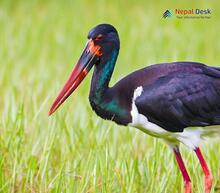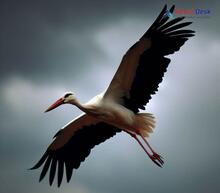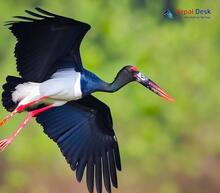The intriguing realm of birds has captured the attention of birdwatchers and scientists for countless years. One such captivating avian species is the Ciconia, a group of majestic wading birds inhabiting various regions worldwide, including the stunning landscapes of Nepal. Here, we'll dive into the categories, shared traits, evolutionary connections, and naming conventions of the Ciconia to further appreciate their enchanting existence.
Classification and Naming
The Ciconia belongs to the Ciconiidae family, which consists of 19 species commonly known as storks. The name "Ciconia" comes from Latin and denotes this incredible bird genus. Within this genus exist six different species, each possessing unique qualities that set them apart from one another. Notable members include the White Stork (Ciconia ciconia), Black Stork (Ciconia nigra), and Oriental Stork (Ciconia boyciana). It's worth mentioning that although these species differ in appearance and behavior, they all belong to the same extraordinary genus within ornithology.
Shared Characteristics
Despite each species showcasing its distinct traits, some common features can be found amongst all Ciconia genus members. These large wading birds typically have elongated legs and necks, enabling them to effectively search for food in shallow waters. Their beaks are straight and sturdy, playing a vital part in securing their prey - mainly small mammals, fish, amphibians, and insects.
Furthermore, Ciconia species are recognized for their remarkable wingspans that grant them powerful flight abilities. They also partake in captivating mating rituals involving bill-clattering performances accompanied by distinct vocalizations and body movements to attract mating partners.
Evolutionary Connections
Grasping the evolutionary ties within the Ciconia genus helps clarify the shared traits between species and unveils how these birds have adapted to their specific environments. The Ciconiidae family, which includes the Ciconia, is deemed a part of the more extensive group labeled as Ciconiiformes. This order consists of various wading bird families, including herons, egrets, and ibises, signifying a shared evolutionary past among these species.
Genetic research on these birds has yielded a further understanding of their relationships with one another. Comparing DNA sequences between species and other similar taxa enables scientists to sketch out potential evolutionary links and comprehend how these fascinating birds came to reside in their current environmental roles.
Nepal's Extraordinary Ciconia
Nepal, being home to an abundance of diverse plants and animals, proudly hosts some Ciconia genus members within its borders. Birdwatchers journeying through this picturesque country might encounter species like the Black Stork or Woolly-necked Stork (Ciconia episcopus), both celebrated for their refined plumage and alluring presence in their natural habitats.
In conclusion, grasping the categories, shared characteristics, evolutionary connections, and naming conventions of the Ciconia genus enables us to further admire these extraordinary birds. As we continue exploring Nepal's rich biodiversity or set off on birdwatching trips elsewhere around the world, we gain invaluable insights that strengthen our bond with nature and promote greater reverence for our planet's varied inhabitants.




